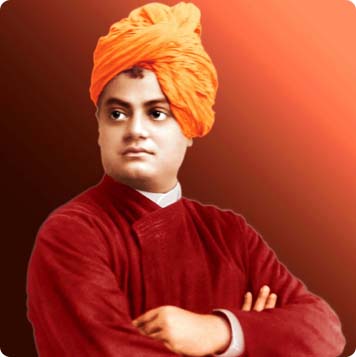
Swami Vivekananda
Biography
He is responsible for revitalizing Hinduism and building its stature as a major world religion. He not only introduced Indian philosophies of Vedanta and Yoga to the foreign soil but is solely responsible for the enthusiastic response of these Indian spiritual self-improvement techniques in the West. He is none other than Swami Vivekananda – a Hindu monk and chief disciple of Ramakrishna. Born in a noble Bengali family, Vivekananda espoused the path of spirituality early in life. Right from a young age, he was fascinated by ascetics and took to practicing meditation. However, life wouldn’t have been the same for this spiritual genius had he not met his mentor and guide – Sri Ramakrishna. Ramakrishna was the powerful force behind Vivekananda who channelized the commanding intellect and power of this young man to unite with God. The two shared an extraordinary bond amongst themselves which became one of the most unique guru-disciple relationships in the history. Vivekananda spent most of his life preaching the Vedanta philosophy to people across the world. A globe trotter, he became a sanyasi at the young age of twenty five and since then devoted his life for the betterment of mankind. He advocated the importance of secular and spiritual education, which he thought was the only way to enrich and inspire the life of the masses.
Childhood & Early Life
Swami Vivekananda was born as Narendranath Datta to Vishwanath Datta and Bhuvaneshwari Devi. Professionally, his father was an attorney while his mother was deeply religious.
Fondly known as Narendra, he was deeply inspired by his parents who shaped much of his personality and thought process. It was since a young age that Narendra had a spiritual bent of mind.
He acquired his preliminary education from Ishwar Chandra Vidyasagar's Metropolitan Institution before attaining his graduation degree in Arts from the Presidency College, Calcutta.
By the time Narendra completed his graduation in 1884, he had not only studied Western logic and philosophy but had even read Hindu scriptures in details, thanks to his insatiable urge to read everything.
Post college, he became a spiritual apprentice. His beliefs were formulated by the Brahmo concepts which admonished idolatry and prophesized the presence of formless God.
Later Years
In 1888, to profess the message of Ramakrishna to the world, Swami Vivekananda resolved to embark on a journey, extensively exploring India in the initial years. He walked on foot, lived on alms and led a life of a wandering monk.
It was during his exploration of the country that he was exposed to the abysmal poverty and backwardness present amongst the masses. He was the first religious leader to claim the neglect of the masses as the major reason for the country’s breakdown.
He understood that the masses required two kinds of knowledge – one which allowed them to improve their economic condition and the second which helped them to build faith and strengthen their moral sense.
To accomplish his goal of bettering the life of the masses, Swami Vivekananda aimed at initiating an organization which aimed at serving the poor and uplifting their standard by providing them education. He even targeted at improving the life of women in society.
In 1893, he travelled abroad for the first time to be a part of the World’s Parliament of Religions. He believed that the Parliament would not only provide him a bigger platform to spread the message of Ramakrishna, but also help him gain financial help for his project of uplifting the masses.
At the Parliament, Swami Vivekananda became known as the ‘orator of divine right’ and ‘Messenger of Indian wisdom to the Western World’. For the next three years and a half, Vivekananda extensively travelled in the eastern part of US and London to spread the message of Vedanta.
Upon returning to India in 1897, Swami Vivekananda gave a series of lecture to different parts of the country before finally returning to Calcutta. He initiated Ramakrishna Mission, an organization which propagated the teaching of Practical Vedanta and commenced various forms of social service such as hospitals, schools, colleges, hostels, rural development centres and so on.
He initiated Ramakrishna Mission and Ramakrishna Math, which propagated the upliftment of the masses and the introduction of Indian philosophies of Vedanta and Yoga to the Western world.
